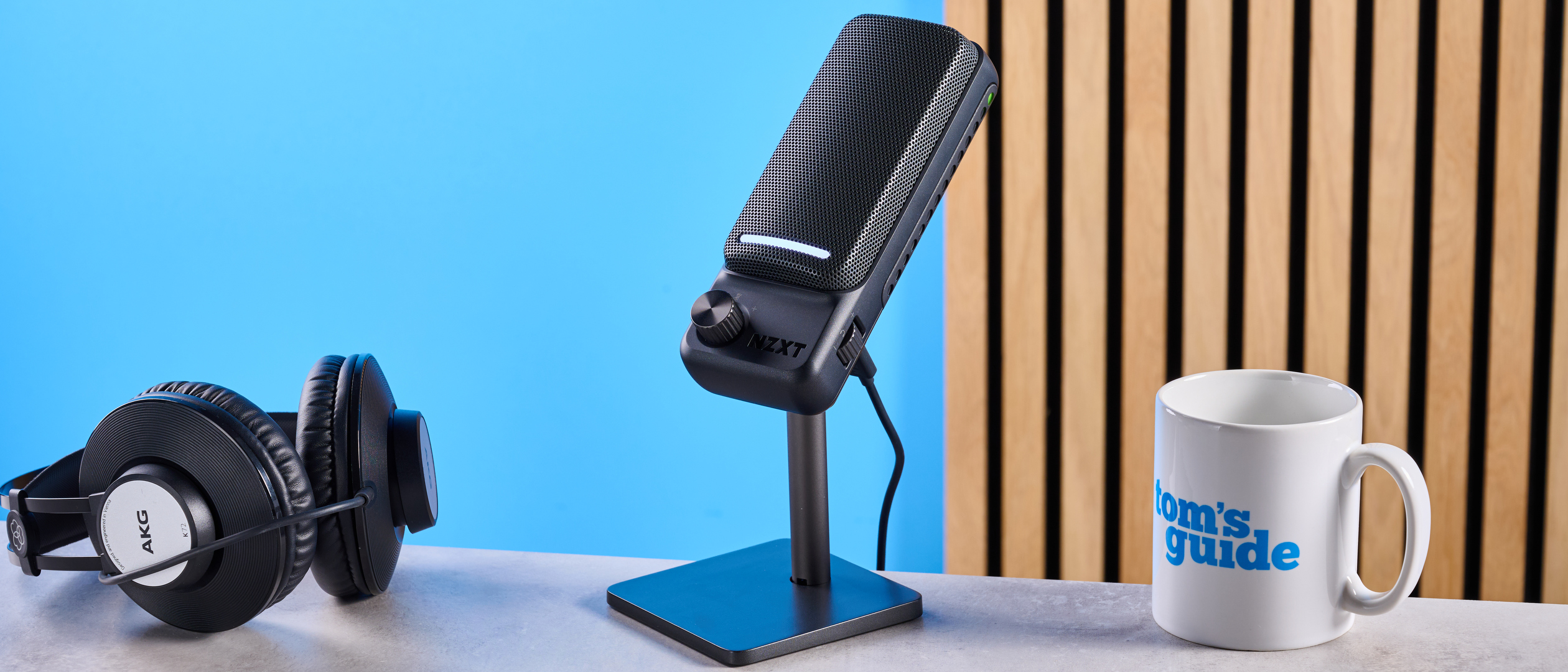Tom's Guide Verdict
The Meta Quest 2’s upgraded specs and design, plus the Quest's expansive apps and games library, make the Meta Quest 2 the best all-around VR headset.
Pros
- +
Sleek, comfortable design
- +
Impressive game library
- +
Intuitive controllers
- +
Good price
- +
Strong built-in audio
Cons
- -
Controllers aren’t rechargeable
- -
Link cable required for PC games
Why you can trust Tom's Guide
The Meta Quest 2 brings a great VR experience on a shoestring budget — a great entry-level headset that may be overtaken come Meta Connect.
That's because we may see the launch of the Meta Quest 3S, which would be the new cheaper counterpart to Meta Quest 3. With updated innards that focus on achieving the same performance as the best VR headset could be an important move that retires the Quest 2.
But until then, this is a solid option for three reasons. First, Quest's signature standalone design forms a relatively slim profile and feels lightweight on your head. Second, there is an ocean of games and apps you can enjoy without needing to be tethered to any device (many of the best VR games are exclusive to the Meta store). Either that, or you can make the most of Steam VR games with a Oculus Link cable.
And third, Meta continues to update it with new features. Most recently, travel mode came to the headset, which makes any long-distance trip fly by. The Quest 2 isn't perfect — controllers that rely on AA batteries are at the top of our list of gripes. And while it's one of the most versatile gaming headsets, it's not the most graphically superior. But in the end, we are still convinced it's one of the best VR headsets for most people. So read on to see why this headset is still one of the best options for getting into VR.
Meta Quest 2: Price and availability
Typically, the Meta Quest 2 starts at $249 in the U.S. and £269 in the U.K. for the 128GB unit. And with the Quest 3 now the top Quest headset Meta has made the Quest 2 the entry-level model of a larger VR headset lineup and is pricing it accordingly.
This pricing brings the Quest 2 back to its launch price — it's gone through a couple of changes. At one point Meta increased the price of the Quest 2 to $399 / £399 for the 128GB headset, but not long after it had to regularly discount the headset or bundle it with games.
Meta Quest 2: Design
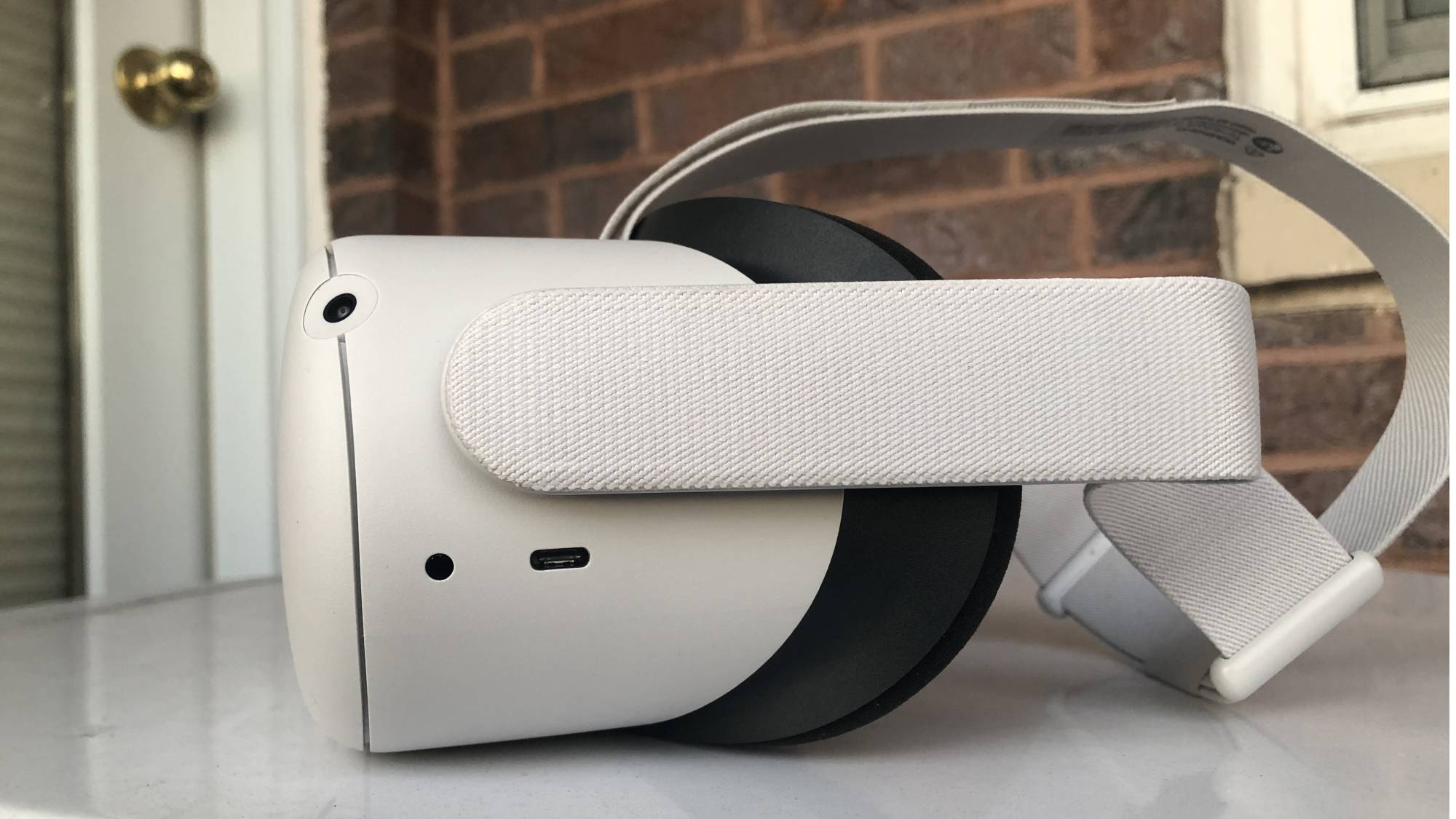
When it comes to design the Meta Quest 2 is sleek for a virtual reality headset. Normally, VR headsets feature bulky goggles, but the Quest 2 replaces those with a light and comfortable headset that is 10% lighter than its predecessor. A simple strap and four camera sensors on the headset give it a simple and clean aesthetics that means it looks decent just sitting on a desk as well as mounted on one's head. Plus, the light gray color also makes the Quest 2 easy on the eye.
The headset’s sparse, smartly placed button and port layout help maintain its seamless design. You’ll find a power button on the right side of the headset, a volume rocker on the right underside, and a USB-C port and headphone jack on the left for charging and audio. You can adjust the spacing of the Meta Quest 2's lenses with three different viewing settings by pinching them or spreading them out manually right within the inside of the headset, eliminating the need for the switch that sat at the bottom of the original Quest.
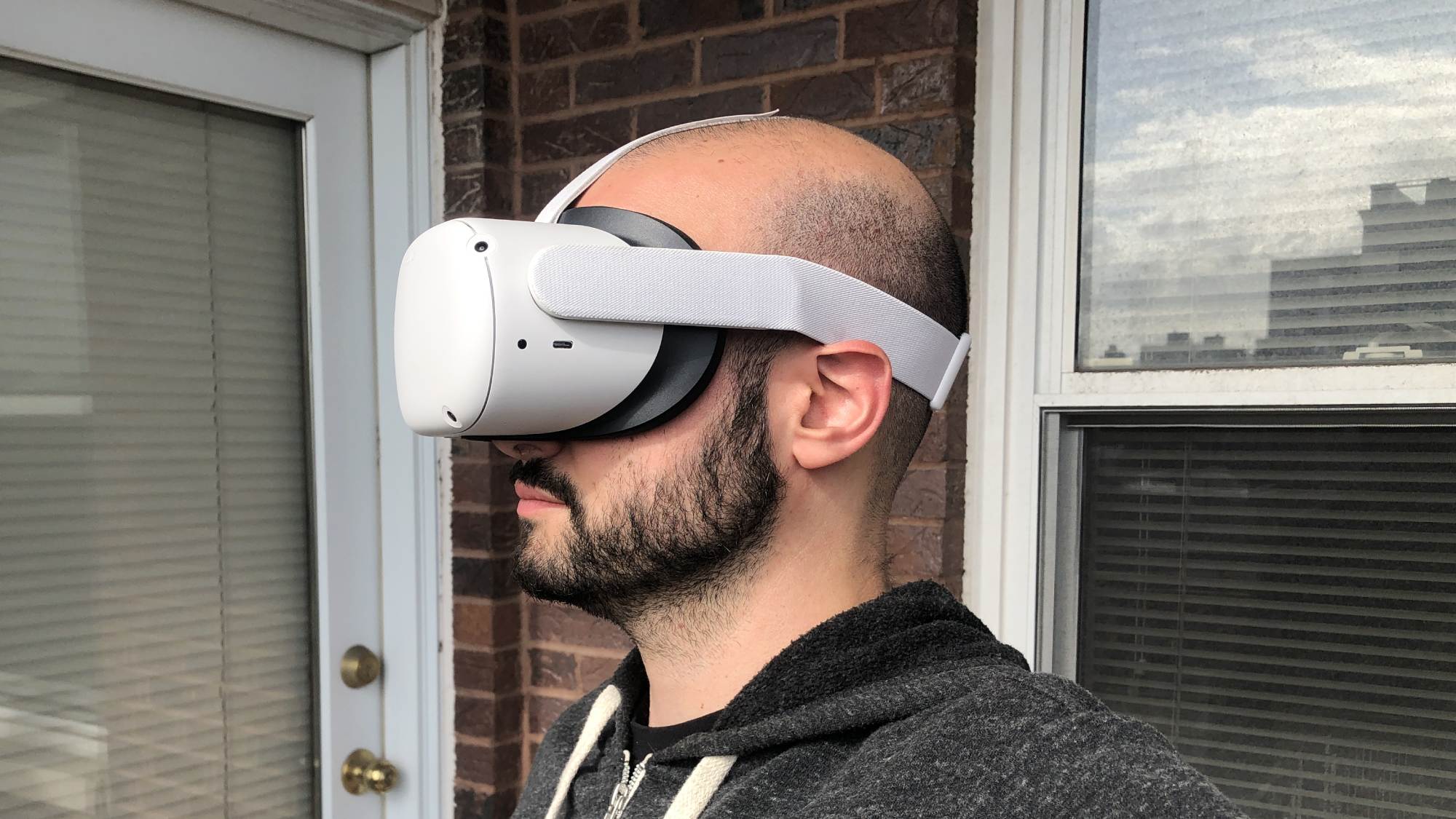
At a compact 7.5 x 4 x 5.2 inches and 1.1 pounds, the Meta Quest 2 felt lightweight and comfortable, even when I spent more than an hour at a time in VR. A generous amount of foam padding made it easy to forget I had a hunk of plastic strapped to my face, while the headset’s adjustable elastic bands allowed me to find the right fit for my head.
A word of warning: I finished a rather long play session with a comically large red indent on my forehead, so you might want to make sure your Meta Quest 2 isn’t too tight before you dive in. Or consider some of the best Meta Quest 2 accessories to ensure the most comfortable fit possible.
If you're looking to keep your Quest 2 viewing experience pristine, check out our guide on how to clean Meta Quest 2 lenses quickly and safely.
Meta Quest 2: specs
| Header Cell - Column 0 | Meta Quest 2 |
|---|---|
| Chipset | Qualcomm Snapdragon XR2 |
| Display resolution | 1832 x 1920 per eye |
| Storage | 64GB, 256GB |
| RAM | 6GB |
| Battery life | 2-3 hours (rated) |
| Size | 7.5 x 4 x 5.2 inches |
| Weight | 1.1 pounds |
Meta Quest 2: Getting set up
Like the original Quest, the Meta Quest 2 is an all-in-one VR system that doesn’t require you to set up any external sensors or cameras — everything you need is right in the headset. The setup process only takes a few minutes; you’ll put the headset on, activate your account via the Oculus mobile app, establish your play area, and you’re good to go.
The Meta Quest 2 once again uses the Guardian system, which lets you sketch out a playspace with your Oculus Touch controllers to avoid bumping into walls and furniture. Creating my Guardian space was as simple as virtually painting a rectangle in my living room, which I could clearly see thanks to the headset’s Passthrough+ cameras. The Meta Quest 2’s Passthrough+ mode is designed to reduce the depth disparity found in other passthrough cameras, and I found it to match up well with my actual surroundings during testing.
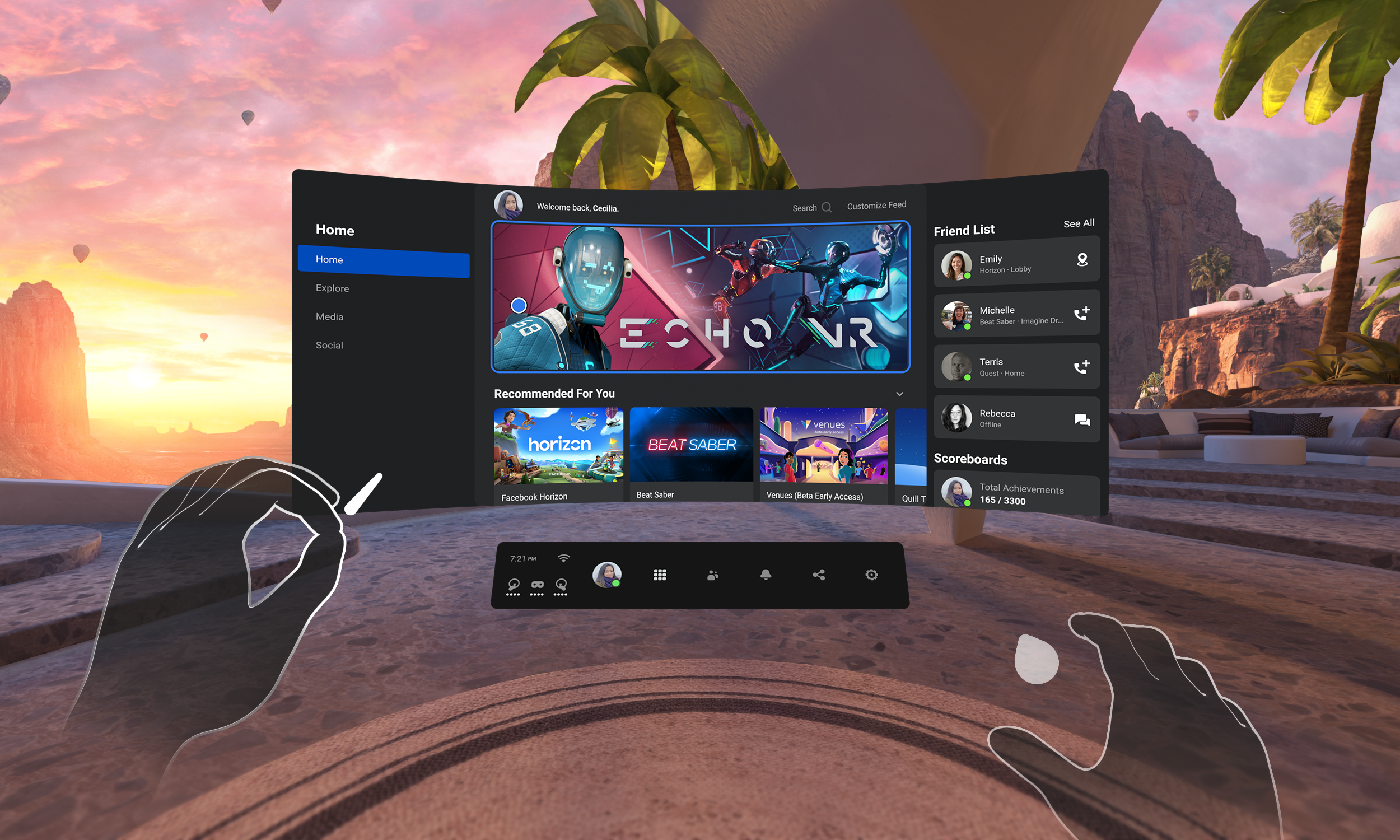
The headset will automatically switch to Passthrough mode if you leave your Guardian boundary, allowing you to instantly see any surroundings you might come into contact with. There’s also an optional ability to toggle Passthrough mode with a quick tap on the side of the headset, which is handy for when you want to check in on the real world every now and then.
Meta recommends having a 6.5 x 6.5-foot space for room-scale VR, which allows you to freely walk around a virtual space for more active experiences. Don’t have a ton of space to play with? You can also establish a stationary boundary for playing with the Meta Quest 2 while sitting or standing in a single spot. If the room you set things up in has a TV, it's possible to cast your Meta Quest 2 to a TV set.
Meta Quest 2: Controllers and hand tracking

The Meta Quest 2 features a redesigned version of the old Oculus Touch Controllers built to deliver better gesture tracking. The setup is largely the same as before: each of the scoop-shaped controllers features two shoulder buttons for doing things like firing weapons and grabbing objects, with clickable analog sticks and a pair of face buttons on each controller. You’ll also want to use the included wrist straps to make sure they don’t go flying in the middle of a tense lightsaber fight.
I found the Meta Quest 2’s controllers to be comfortable and easy to use across a variety of different games and experiences. The snappy triggers and accurate motion sensing allowed me to snag easy headshots in Pistol Whip, and I had no trouble hacking away at color-coded blocks during the rhythm action of Beat Saber. The controllers’ haptic feedback is also impressive, as it allowed me to feel the distinct buzz of an ignited lightsaber during Vader Immortal while keeping me on track in Tetris Effect with a subtle pulse that matched the in-game music.
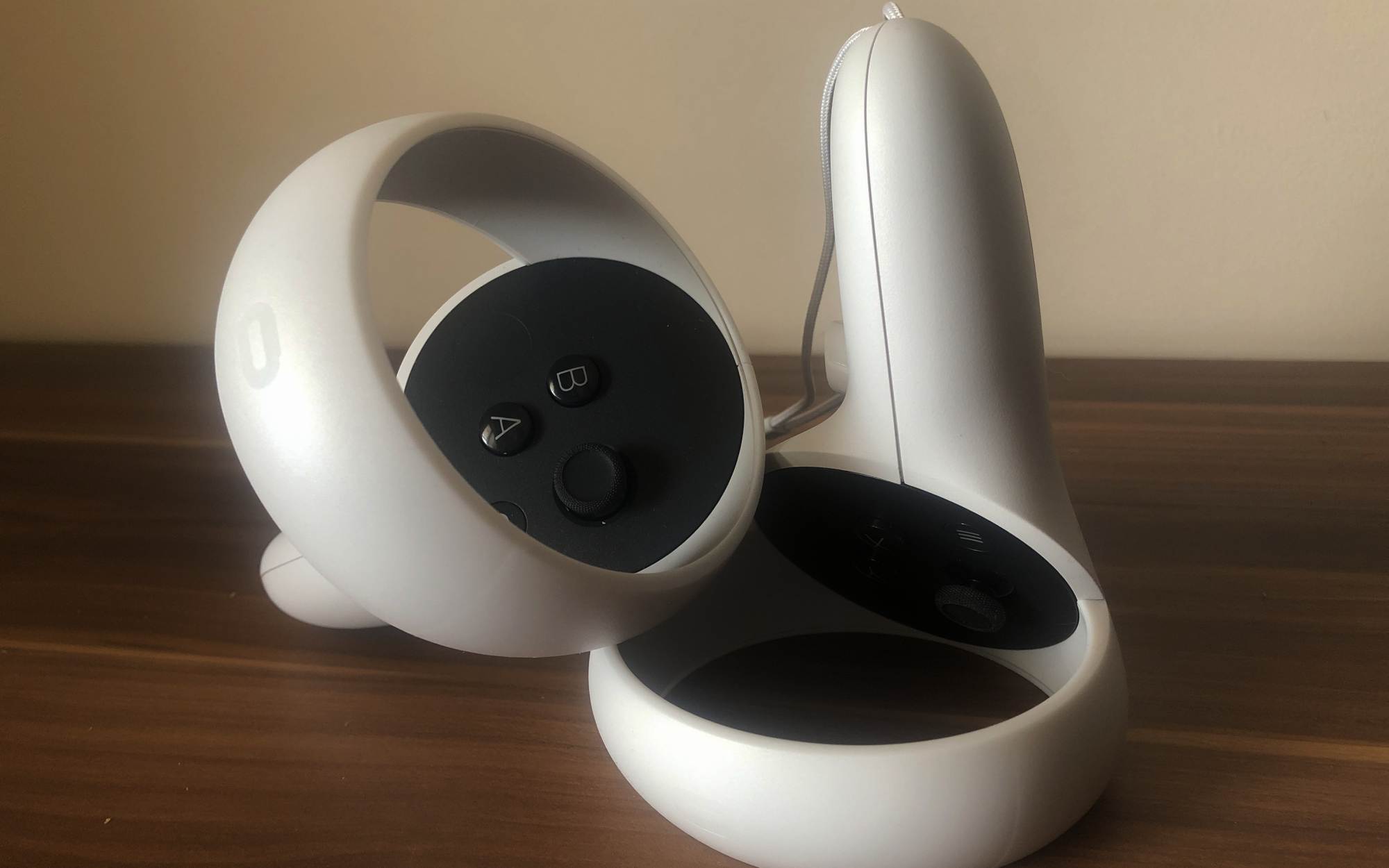
I’m slightly disappointed that the Touch Controllers run on AA batteries, and aren’t rechargeable via USB. Still, each controller uses only a single battery, and both of my controllers are shown as having full battery capacity on my Quest interface after several weeks of use. The controllers are rated to offer around 30 hours of juice on a single battery.
The Meta Quest 2 also offers hand tracking, allowing you to navigate the headset’s menus and play select games using your hands alone. While I appreciate having the option, I found that hand-tracking wasn’t as intuitive as I’d hoped, and had trouble getting my pinch-to-select gestures to register as I moved around the Oculus home screen.
There are currently only a handful of Quest apps that support hand tracking, and the feature was finicky at best in the ones that I did use. While I eventually got the hang of navigating menus and moving documents around in the Spatial productivity app, I struggled to control hand-supported games such as The Curious Tale of the Stolen Pets.
Meta Quest 2: Performance
The Meta Quest 2 has been given a performance bump over its predecessor, thanks to the use of a Snapdragon XR2 chip. Matched with 6GB of RAM, the Quest 2 has a notable jump in specs over the original Quest, which was saddled with a Snapdragon 835 CPU, a chipset designed more for smartphones than VR headsets. This means the Meta Quest 2 runs a lot smoother than the older VR headset and makes for smooth and snappy menu navigation. And thankfully, I didn’t encounter any slowdown when playing games while downloading several other titles in the background.
Games like Beat Saber, Pistol Whip and Vader Immortal, ran smoothly and looked impressively crisp and clear. That being said, I wouldn’t exactly compare them to what you’d get out of an Xbox Series X or PS5, let alone a powerful gaming PC. But the titles I played were flush with color and detail to keep me immersed in the action. And I didn’t experience any crashes or framerate dips to take me out of the VR experience.
Meta Quest 2: Games
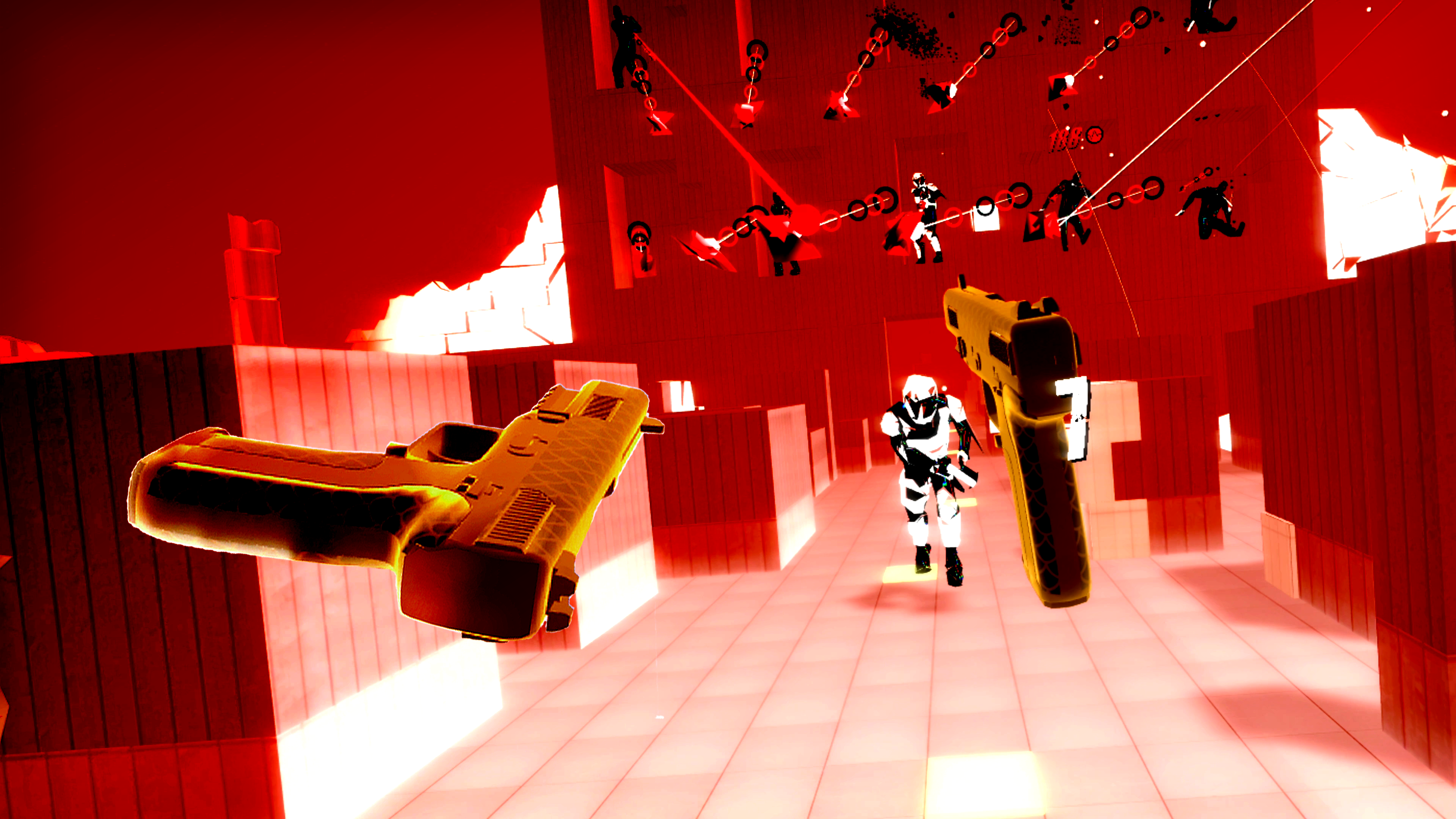
The Quest platform has amassed an impressively solid game lineup that runs the gamut from new takes on established AAA franchises to exciting indie titles that make full use of the Meta Quest 2's VR abilities.
Highlights include the rhythm-slashing game Beat Saber and the immersive time-bending shooting of Superhot VR, the latter of which made me feel like I was in a trippy sci-fi action movie as I controlled time and threw bullets back at enemies.
As a Star Wars nerd, I completely geeked out on Vader Immortal, a first-person action-adventure game that had me sneaking around imperial strongholds and engaging in tight lightsaber combat. And I absolutely loved Pistol Whip, a neon-drenched arcade shooter that had me popping headshots and dodging enemy fire to the beat of pulsing EDM music.
Tetris Effect is already one of my favorite games of all time, but being able to enjoy its serene visuals in the Meta Quest 2's completely immersive 3D environment made the experience that much sweeter. And Polyarc's Moss is an excellent fusion of traditional controller-based platforming and deep VR interactivity, allowing you to move obstacles with your hands while guiding an adorable mouse with your joysticks.
Another awesome single-player game is Resident Evil 4 VR, which will add The Mercenaries mode as free DLC in 2022.
There's also a killer tool appropriately called OculusKiller that lets you load Steam VR directly on the Meta Quest 2 headset.
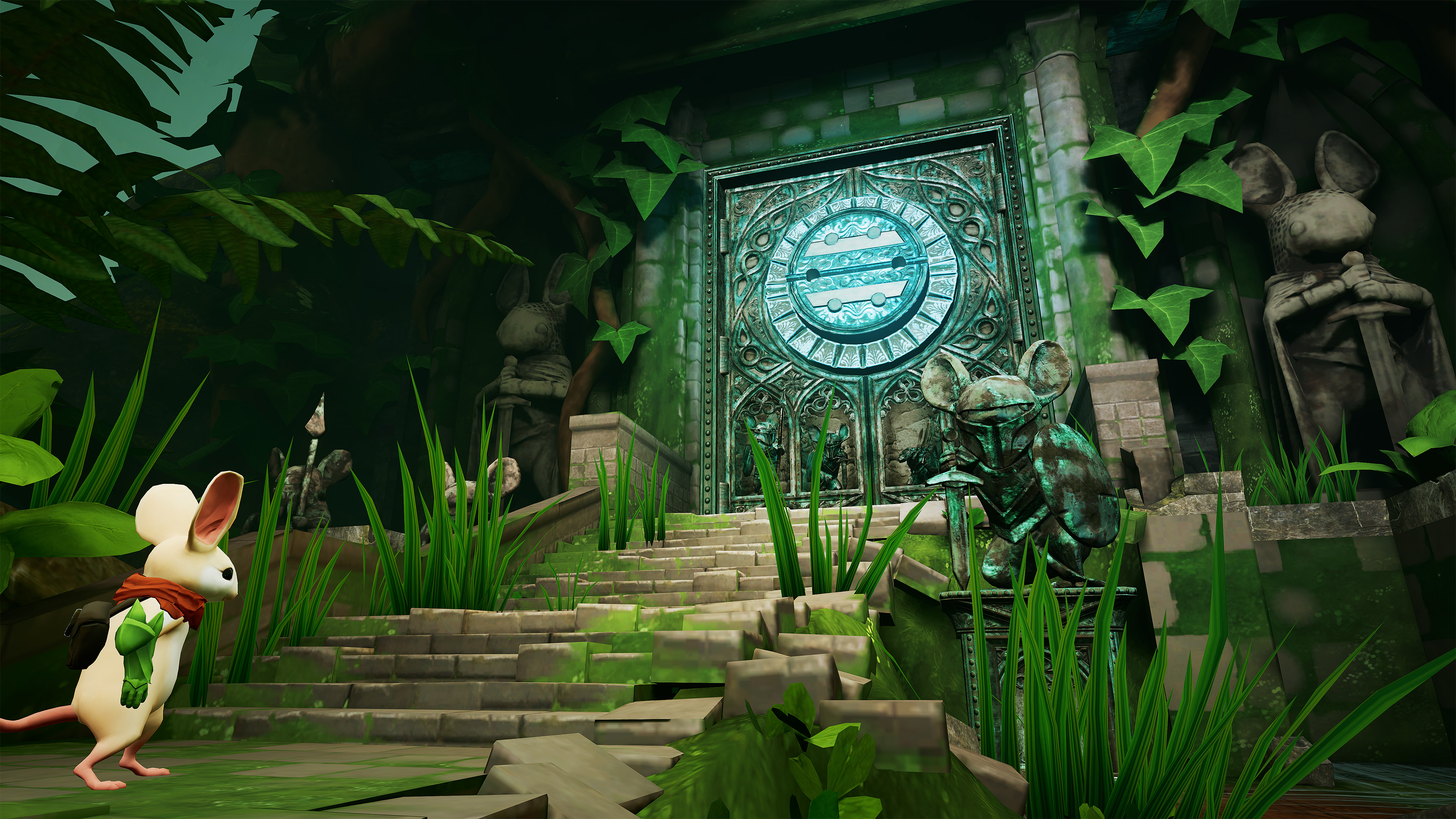
The Quest 2 also excels as a multiplayer machine, allowing you to play in virtual spaces with friends at a time when gathering in person is more difficult than ever. Beating up bad guys in VR brawler Path of the Warrior with a friend is one of the most hilarious and fun multiplayer experiences I’ve had in a long time, and Eleven: Table Tennis VR did an admirable job translating my poor table tennis skills to the virtual world.
You can augment the Meta Quest 2’s game library even further with the $79 Link cable, which lets you connect your Quest to a VR-ready PC and play an even larger range of VR titles including Half Life: Alyx, Star Wars Squadrons and Fallout 4 VR. While it’s a bummer that some of the best VR games out there aren’t available on Quest 2 out of the box, the Link cable effectively turns your Quest into a lower-end PC VR headset.
Meta Quest 2: Apps
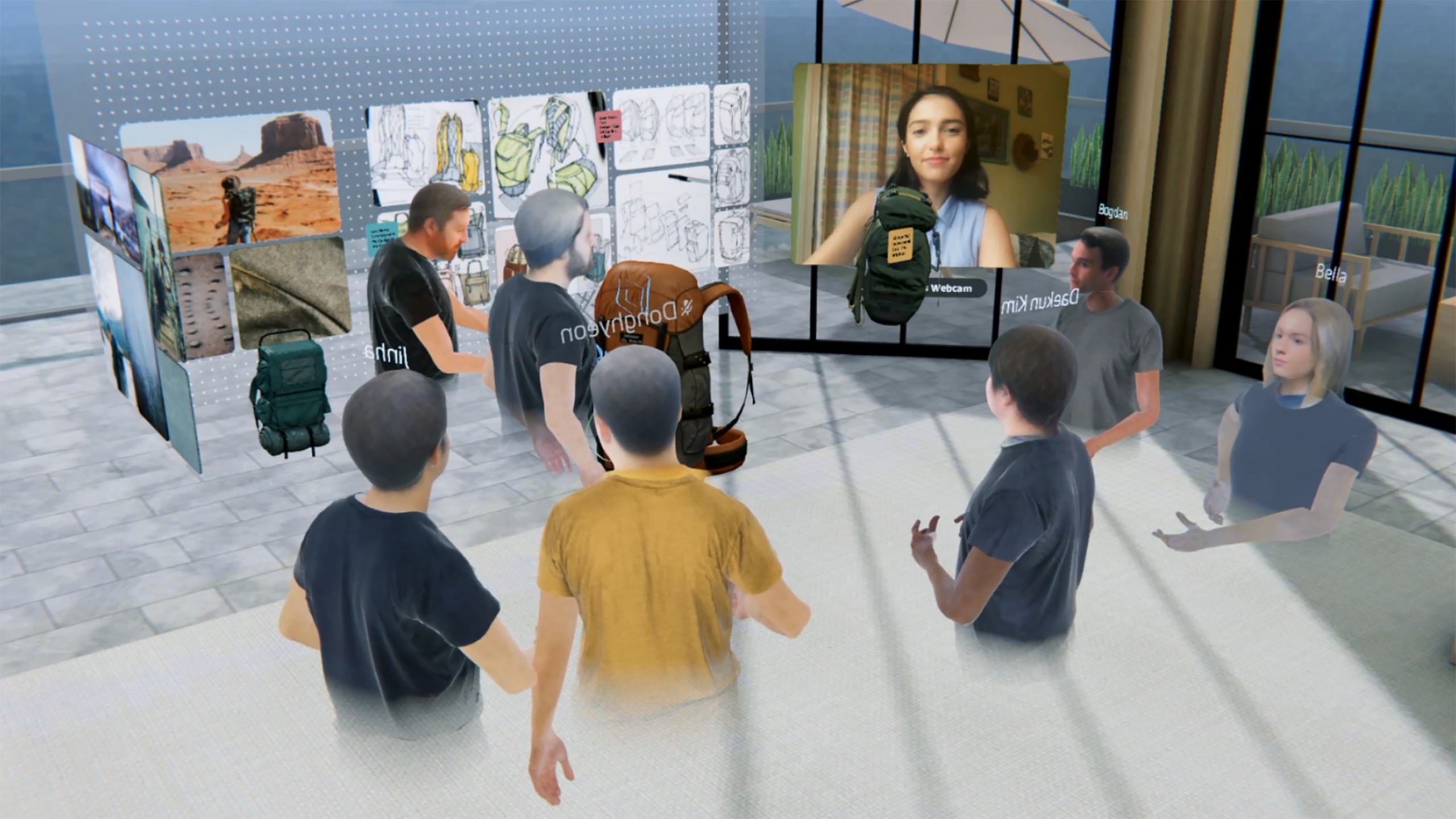
The Meta Quest 2 is much more than a gaming device, with a healthy selection of entertainment and productivity apps that let you watch videos and collaborate with others in cool ways. I looked around in awe as I virtually stood at the top of Mount Everest in a 360-degree YouTube VR video, and was surrounded by the mesmerizing percussion of the Blue Man Group when watching their virtual concert in the Oculus TV app (now the Meta Quest TV app).
The Quest 2's TV app also let me ride a virtual rollercoaster, which had my adrenaline surging and almost made me wimp out before I remembered I was sitting at my desk. The Spatial app provides an impressively robust virtual workspace for collaborating on documents and 3D models. Meanwhile, the Virtual Desktop app allowed me to use my Windows 10 PC in an immersive VR environment.
Meta Quest 2: Audio
The Meta Quest 2’s built-in positional audio isn’t new — it also appeared on the Quest and Rift S — but it still blows my mind every time I use it. The headset’s built-in speakers pump out crisp, loud sound without the need for headphones, with some impressive directionality to boot. I could hear where the buzzes of nearby bees and chirps of birds were coming from while hanging out in my home screen oasis, and could easily pinpoint enemy fire while blasting away in Pistol Whip.
If you want even more immersive sound, the Meta Quest 2 has a handy 3.5mm jack for connecting any headphones you like. Meta has also collaborated with Logitech to create the Chorus, a set of speakers that clip onto the strap of the Quest 2 and provide immersive sound that still leaves you slightly connected to reality. But the headset’s built-in audio feels like magic, and adds to its pick-up-and-play allure even more.
The Meta Quest 2’s built-in microphone proved dependable as well. I had no problem coordinating with a friend as we tossed around bad guys in Path of the Warrior, and his voice sounded crisp and clear coming from his own Quest 2.
Meta Quest 2: Battery life
The Meta Quest 2 is rated for 2 to 3 hours of battery life: 2 if you’re playing games, and around 3 if you’re mostly watching videos. I found this to be largely in my line with my testing, as I only had to plug the Quest 2 in every few days while using it in small chunks. After several sessions playing games on a fully charged Meta Quest 2 for more than an hour, I found that the battery was around 50% drained by the time I finished.
Meta Quest 2: Accessories
Now that it's been more than two years since the Meta Quest 2 was released, there's a good range of accessories to be had for the headset.
These range from improved head straps and battery packs to third-party controllers and the ability to get a dedicated cable to link the headset to a gaming PC.
So check out our round-up of the best Meta Quest 2 accessories for some rather neat upgrades should you buy the Quest 2.
Meta Quest 2: Verdict
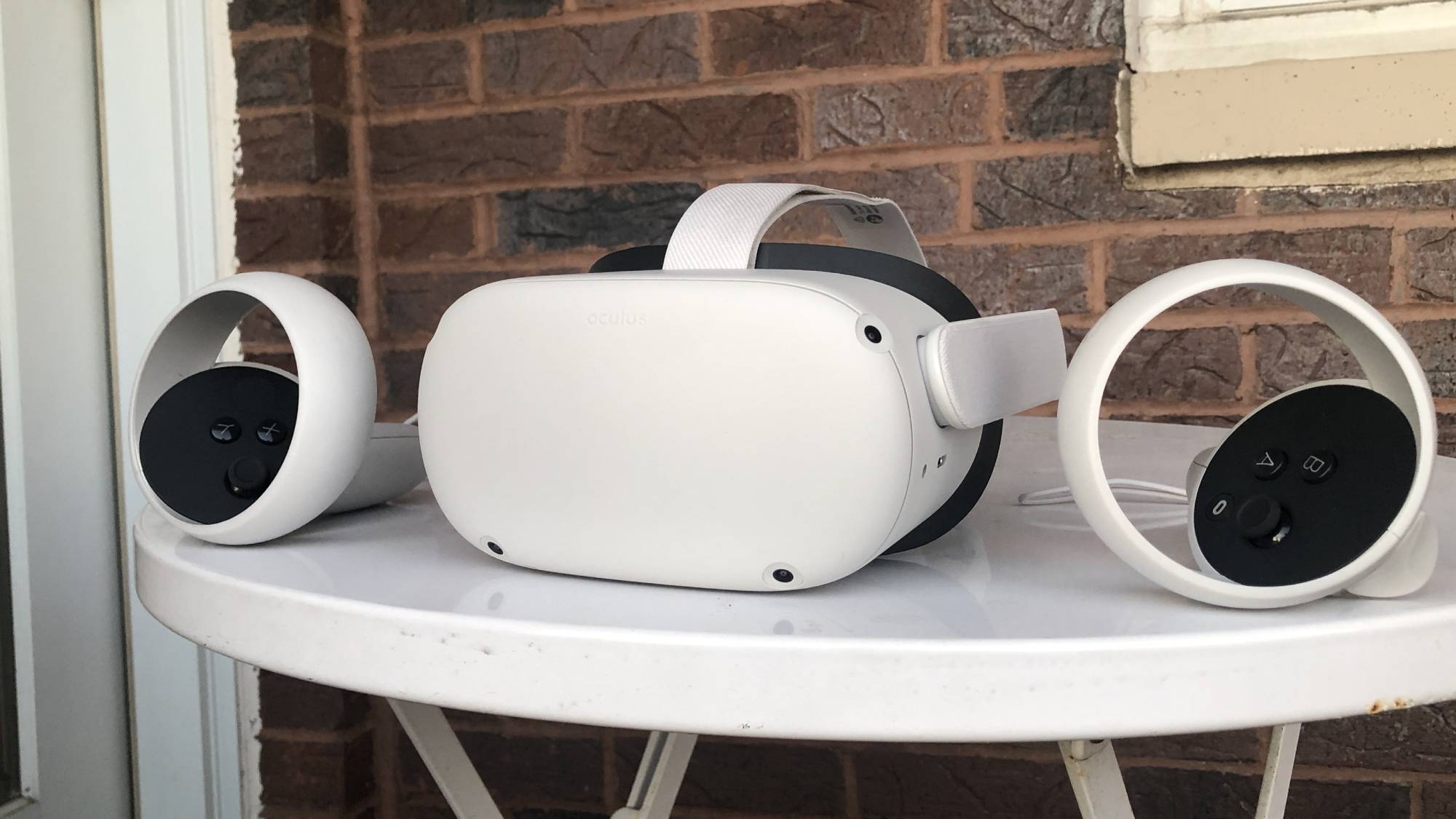
The Meta Quest 2 has a joyously simple “it just works” magic to it that reminds me of the first time I picked up a Nintendo Switch or an iPhone. Like its predecessor, the Meta Quest 2 eliminates the previous hurdles of getting into virtual reality — namely the need to have a powerful PC and tons of wires and sensors — and packs a ton of great experiences into a sleek device that you can pop on at a moment’s notice.
If you already own an Oculus Quest headset, the Meta Quest 2's improved design and performance alone might not sway you to make the upgrade. And the new headset can get costly if you factor in the price of buying a Link cable or upgrading to the 256GB storage model. But if you’ve yet to dive into VR or want to finally go untethered, the Meta Quest 2’s price, game library and overall ease of use make it the best entry point into virtual reality yet.
Mike Andronico is Senior Writer at CNNUnderscored. He was formerly Managing Editor at Tom's Guide, where he wrote extensively on gaming, as well as running the show on the news front. When not at work, you can usually catch him playing Street Fighter, devouring Twitch streams and trying to convince people that Hawkeye is the best Avenger.
- Roland Moore-Colyer
- Malcolm McMillanStreaming Editor


